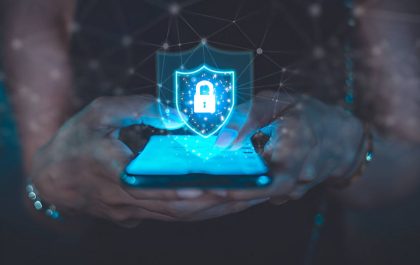The growing impact of IoT and the adoption of access control and video surveillance systems will boost the security market in the next six years. According to the consultant Grand View Research, this market will reach a turnover of 167,120 million dollars in 2025, with an average annual growth of 10.3% in this next six-year period.
According to Frederic Salles, CEO of Matooma, ” security affects both companies (employee and property safety), as well as people (home, home, and family security isolated).”
In recent years, IoT and connected devices better meet everyone’s security needs: video surveillance cameras, connected cardiac defibrillators, connected telecare devices, biometric access controls. The Internet of Things has become an essential technology for the development of this sector.
Related Post: Emerging Technologies
Table of Contents
ToggleThe IoT reinforces the Security Market of Goods and People
Connected devices allow better machine supervision, anticipate human and material accidents, and optimize performance and costs.
Business:
IoT allows companies to be safer and more productive. About employees, for example, if one or more workers are isolated, it is advisable to equip them with an alarm system or a fall detector to avoid danger. In the case of a fall, for example, the connected sensor automatically sends a message to a rescue center for a quick response.
Building security is another key aspect that companies must take care of. In this sense, connected fire alarms can alert firefighters in case of fire in the workplace. The biometric access controls installed at the entrance of a building only allow access to the employees of that company, through a quick analysis of fingerprints. Besides, video surveillance cameras provide permanent visibility of the facilities.
Finally, cost-related security is another aspect to consider. There is currently equipped to control the energy consumption that sends alerts in case of overconsumption.
Also Read: Essential considerations for Artificial Intelligence in Mobile Networks: How to feed your AI
Big audience:
Among the main connected security applications that affect the end user, we find:
- Family safety: fire alarms and video surveillance cameras also help people feel safer at home.
- Home security: home automation is a good example. Thanks to its peculiarities, the concept of “connected home” begin to take shape (doors and windows that open and close remotely, a light that turns on or off remotely, cameras placed on the front door, etc.);
- Security of isolated loved ones: if an elderly one lives alone and suffers a mishap, a telecare device will automatically send a message asking for help.
- Safety in cities: connected cardiac defibrillators are increasingly present in public places in cities.
Problems of the manufacturers of IoT devices
Beyond the pure commercialization of connected devices, the challenge for security market actors is not the same. Frederic Salles, CEO of Matoma, explains that “they must supply impeccable products; in fact, a cardiac defibrillator or a telecare bracelet must always work when a person needs them.” The performance of connected objects and the choice of an excellent connectivity solution are two elements that should not overlook.
Related Post: IoT Risks
Multi-operator M2M SIM card for added security
The multi-operator SIM card is a connectivity solution that provides reliability to connected devices. Once inserted into the object, the card automatically connects to the best available local network. This card ensures connectivity close to 100% of IoT devices. This SIM card can connect to different local networks. Therefore, if one of the networks has connection problems at a specific time, the device automatically starts a scan of the available networks, and the SIM card connects to another reliable and powerful network.
Shashi Teja
Related posts
Hot Topics
Mobile Threat Defense: The Silent Shield Behind Every Secure App
Mobile apps are found everywhere in India’s rapidly developing digital landscape—from banking and online shopping to healthcare and learning. And…
How to Get Started with Crypto Trading: A Complete Beginner’s Guide
I was completely shocked when I began trading in cryptocurrency. I was there, seeing numbers arranged like an abstract painting,…



